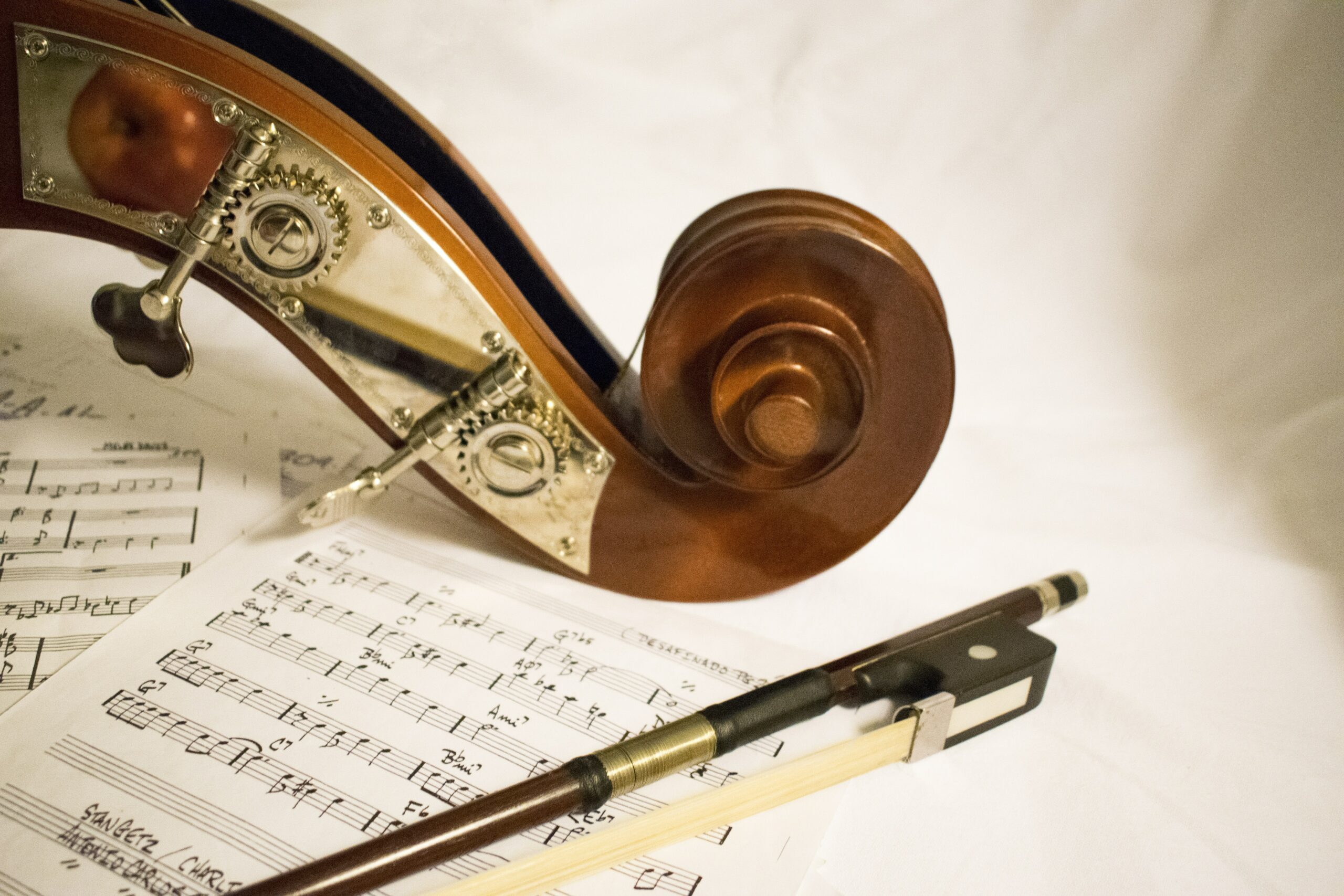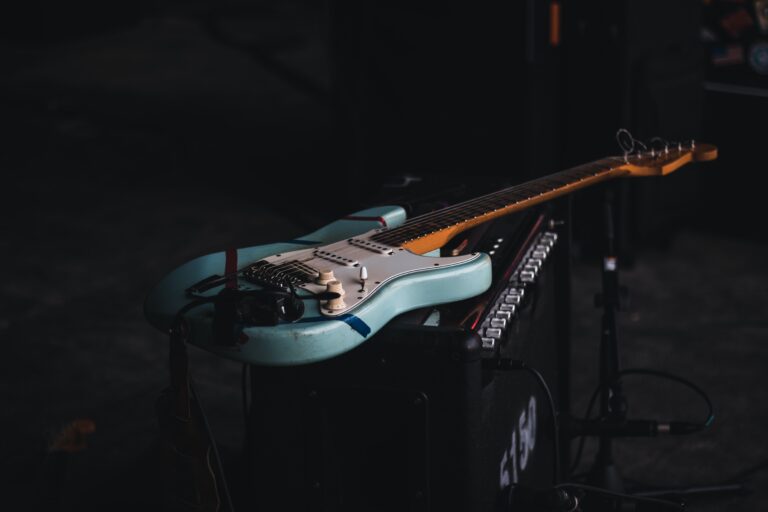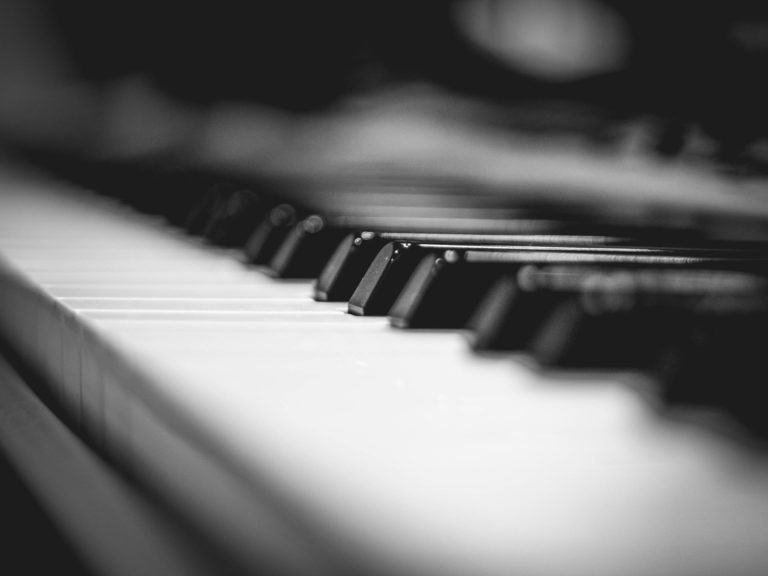Can Bassists Play Double Bass?
Seeing bass guitarists playing the double bass often makes people stop and take notice. After all, a bass guitar and a double bass have two separate profiles within the music world.
Bass guitarists actually can play the double bass, because both instruments are strung to the same notes. However, the technique and playing style can have a steep learning curve requiring some effort to switch between the two instruments.
It just takes one look at music icons such as Sting or Les Claypool to see them interchange between both instruments throughout their careers. However, the stark differences in both playing styles and how each instrument is constructed mean that bass guitars and double basses should be viewed as the same.
So how easy is it actually for bass guitarists to play the double bass?
Bass Guitars vs Double Bass
In terms of their overall purpose, a bass guitar and double bass share the same role in an ensemble. They are there primarily to generate the bass line of a song.
No matter if you are in an orchestra or a metal band, you will find either of these instruments being used to generate the bass section of a song. However, they are both instruments with very unique and different characters.
What Are Bass Guitars?
Any time you see a pop or rock act playing live, there’s going to be a bassist on stage jamming with a bass guitar. It’s become the default way for musicians to play bass sections within their music.
A spin-off from the electric guitar, a bass guitar usually consists of four strings across a fretboard tuned to two octaves lower than a standard guitar.
Bassists can then play the instrument like a conventional guitar, moving hands across the frets and hitting the strings to generate sounds.
Over time, bass guitars have been modified to include anywhere between 4-7 strings depending on what sounds an act wants to achieve.
Alongside that, there have been plenty of different playing styles to emerge, ranging from conventional picking to slapping strings to get stronger sounds. No matter how this is put together though, the bass guitar is still many acts’ main weapon of choice for lower register noises.
What Are Double Basses?
In more classical settings, orchestras and ensembles look to a double bass to provide the bass sections of a song.
Played upright, the double bass is a four-stringed instrument that is completely fretless and played with the strings being plucked by the fingers.
Double basses have been used in music for centuries with the earliest models dating back to Medieval Europe. It then became a popular choice for many composers during the Baroque and Romantic movements to provide the lowest bass sections of a symphony.
Over the years, the basic shape and style of a double bass hasn’t changed. With the instrument having a unique profile, it is one of the more striking parts of any orchestral unit.
Is The Double Bass Hard to Learn for Bass Players?
Any bassist playing the double bass is going to face a completely different challenge from what they are used to. The double bass is remarkably different to how it is played and sounds compared to a bass guitar. So what should they prepare for when switching instruments?
Instrument Profile
The looks between the two instruments reveal a lot about the difference in playing style. For starters, the double bass is played upright and twice as large as a standard bass guitar. This means that the 6ft instrument has to be played standing up instead of horizontally. It also is a much more restrictive movement compared to hopping around the stage with a bass guitar.
What this means is that anyone looking to play the double bass instead of the bass guitar will need to get used to standing and holding a significantly larger instrument that is also much heavier to hold for long periods.
Playing Style
For most bassists, they will be used to picking strings with one hand and working the frets with the other. On top of that, some may like to hit the strings hard as they utilize a slap-based style like Flea.
It’s a different story though when it comes to playing the double bass. All the work is done with the fingers hitting the strings. Unlike the repetitive strumming motions, you pluck or bow the strings to generate the sounds. Most of the time, one hand holds the neck of the instrument for stability while the other work the strings.
Anyone looking to make the switch will then need to be aware of how they need to adapt their playing style between each instrument.
Technical Knowledge
What bass players playing need to be aware of is the similarities and differences between the technical aspects of both instruments. Thankfully, they do share some common ground. Both instruments have each of their strings set to the same notes – the standard EBDG layout. This means that playing the notes is generally the same in whatever music is being represented.
However, there are also some key differences. Firstly, the instruments are not quite tuned to the same key. That’s because the double bass itself is generally set to one octave lower than a bass guitar. It means that the instruments hit even lower notes when necessary.
Secondly, there is the positioning of your fingers on the instrument itself. Whereas a bass guitar has frets to suggest note types, the double bass does not. With it being completely fretless, anyone playing the double bass needs to be extremely precise when moving each string. It is a profile that requires the player to have some knowledge of the instrument itself.
Are Bands Still Use Double Basses?
Despite the difficulties in switching between both instruments, it’s something that you do see across modern rock music. The most obvious example is Sting who memorably played the double bass on The Police’s single “Every Breath You Take”. The iconic music video shows Sting playing a larger instrument instead of a regular bass guitar. Switching between the instrument has been a staple of Sting’s career over the last few decades.
Alongside that, Pearl Jam has used a double bass in several albums with long-time bassist Jeff Ament playing both instruments. Having been a feature in iconic albums such as VS. and Vitalogy, it shows how the band was willing to experiment with sounds after breaking through with their iconic debut Ten.
Bands Using Double Bass Only
For some acts, they have completely surpassed the regular bass guitar and use a double bass instead. The best example is the Canadian alt-rock band Barenaked Ladies. Since 1989, the band have had double-bassist Jim Creeggan providing the majority of the band’s bass sections using a double bass instead of a regular guitar.
Most notably, the band’s flagship 1998 hit “One Week” was played entirely on double bass. It’s a unique quirk where this Billboard Hot 100 number one song hit the top spot without featuring a regular bass guitar. It’s been a hallmark in other hit songs for the band including the theme song to the TV series The Big Bang Theory
Final Thoughts
At the end of the day, bass guitarists playing double bass are not as uncommon as many people think. However, it is a challenging feat to accomplish regularly. With both instruments being different in shape and use, they rarely crossover into the same musical spheres. Bass guitarists also have to radically adapt their playing style to pay a double bass convincingly.
Of course, they do share some characteristics. With both instruments strung to the same scales, it makes understanding the music no challenge at all. They also can play the same bass even if it is within different octaves. The success of acts such as The Police, Pearl Jam and Barenaked Ladies shows that many acts make the switch and are successful. It’s why bass guitarists playing the double bass is a feat we’ll see in pop and rock music for years to come.







![5 Ways Musicians Might Dress On Stage [Based on Genre]](https://www.bythebarricade.com/wp-content/uploads/2020/11/band-4671748_1920-768x432.jpg)
